The annual assault of fifty million on Britain's nature
Who are those 50 million attackers, those terrible nature wreckers? We're talking about pheasants, those wonderful, long-feathered birds - and yes, the real culprit is, as ever so often, human.
Think of a specific landscape. Maybe it’s a place you’ve visited during your holidays. Maybe it’s the hills you’ve hiked with your parents or the woods you walk with your dog. Now imagine that someone releases a huge amount - many millions - of one single species into that landscape. Would you expect that landscape, with its flora and fauna, to remain unaffected, unchanged? Of course you wouldn’t.
Opportunistic values
I’ve once spoken with an expert about a study undertaken to gauge the firmness of people’s values. Turns out that less than a third of those assessed had what’s termed “protected values”. Those were the ones with values that would not budge, regardless of incentives. More than two thirds of test subjects turned out to have “opportunistic values”. They were willing to rationalize why they’d to this or that - even if they knew it wasn’t the right thing to do.
You’re probably wondering what this has to do with pheasants, right? Simple - these opportunistic values have led to people with outsized wealth owning shooting estates, creating obfuscating entities and weaving into every aspect of government with incentives of favors, connections, relationships, career opportunities and more. It has led past governments to look the other way, ever since pheasant shooting began turning into an industrialized venture in the seventies (compared to then, the numbers of pheasants released for shooting has risen by nearly 600%).
Mass importations, mass releases
The shooting industry releases 50’000’000 pheasants (and red-legged partridges) on UK shooting estates every year. There are those reared in UK farms (more on that later) and those imported from abroad. One example: a whopping 5’000’000 pheasants and over 2’000’000 partridges were imported live into the UK in 2018/2019. In addition, during the same time over 50’000 pheasant eggs were imported from the US.
So here you have England (where much of the pheasant shooting industry resides), a country that is in desperate need of nature recovery efforts and one where a great deal of that is happening at increasing scale.
At the same time, every single year, a non-native species is dropped into that nature in the many millions. There are a few sides to this story, animal cruelty is an obvious one. I’ll let you read up on that here - how these birds are treated, the lack of transparency and laws … it’s all telling a very clear story.

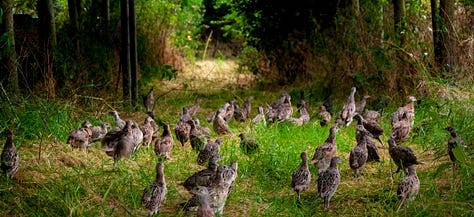
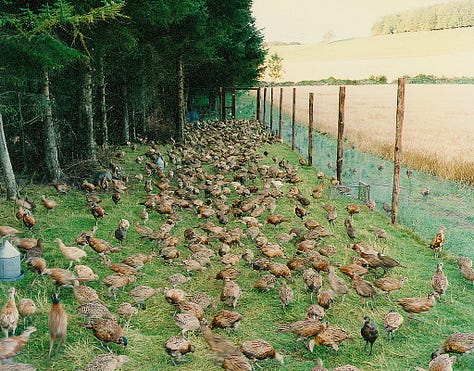
The impact on nature
Pheasants are held in release pens with feeders that also feed other critters such as rats and crows. It leads to a population increase that further undermines the already degraded and imbalanced flora and fauna.
Of the many millions of pheasants released, the shooting industry itself says that less than half of those released pheasants are actually shot. The surviving birds, reared in pens, are not equipped to survive in the wild and die. These carcasses increase the numbers of carnivores that then create the next imbalance.
These massive shooting estates, to maximize profit, put out snares and traps to catch and kill those carnivores, such as foxes, stoats and crows, as they are seen as a threat to pheasant populations. Those snares and trips do not discriminate and kill many more animals.
The many release pens (where pheasants are put before complete release for shooting) come with obviously high densities of pheasants that have negative effects of woodland ground flora, resulting in reduced plant diversity and increased weed species.
Pheasants are omnivores (as Guy Shrubsole highlights in The Lie of the Land) and their presence in the many millions has an inevitably negative impact on insect populations, as well as worms, snails, mice, lizards - even small birds and young snakes.
Feeding pheasants
Again, those pheasants are not wild - they were bred and reared in cages, then held in release pens, then shot at and either killed, or wounded with a slow death the consequence, or they’re among the many who were not shot and killed. There are pheasant feeders - such as the one pictured here - across shooting estates.
The shooting industry doesn’t want you to think about the aforementioned rats and crows, of course, but that these feeders also benefit other birds. The thing is, those other birds are wild and are part of a natural cycle and don’t need feeders.
You know how the farming lobby always goes on about food security? Which is rubbish anyway, because so much of what is produced is exported. Back to pheasants - an incredible 2% of the UK’s annual wheat production goes into the rearing of those many millions of pheasants!
300 ‘game’ farms
The Game Farmers’ Association states that there are 300 ‘game’ farms in Britain, mostly focused on rearing pheasants and partridges. I’d like you to get a sense of the insanity of what is happening - annually - because an elite niche of people love to enjoy a day or two out in the country to slaughter a number of innocent animals.
Here’s what the Game Farmers’ Association writes: “The game farming year starts in February when laying birds are penned for mating and egg production. Eggs are collected daily from April onwards and are hatched in electronic incubators. The chicks are then reared on in purpose-built shelters, where they are provided with food, water, grit and all their other needs. As they grow, the chicks (now known as 'poults') are given access to outdoor runs where they can get used to the natural environment and 'harden off'. In about August, when the birds are some eight to ten weeks of age, they are sold to shoots, where gamekeepers will take over their care, releasing them carefully into the countryside.”
And all of that unbelievably misguided labor about something that has - any which way you slice it - animal cruelty as its core purpose, exists solely because a small group of shooting estate owners have the financial wealth - often coupled with political ties - to keep the status quo in place. The shooting industry considers itself a huge boon to the UK’s economy. But the reports they put out are clearly the offer false numbers - they are marketing propaganda, nothing more.
The shooting economy is no boon to the economy, but a bane to nature - and very clearly so. It should be outlawed, relegated to the past where this cruel pastime belongs.
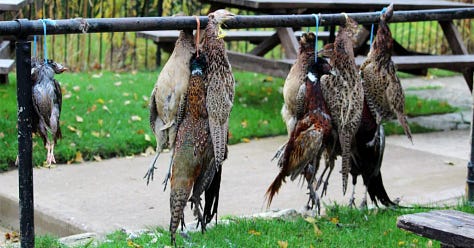
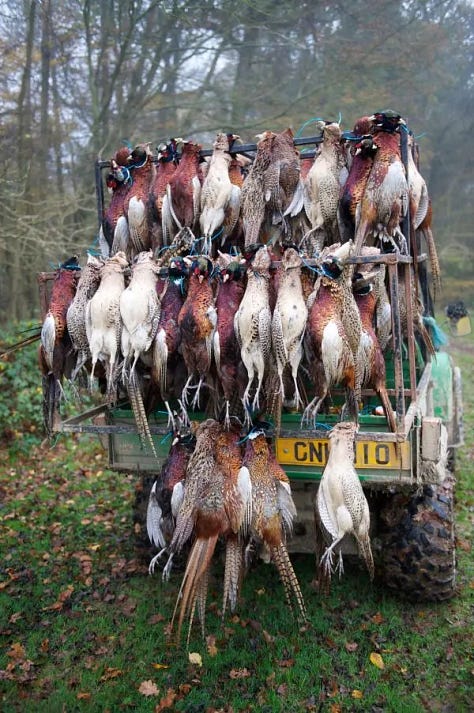
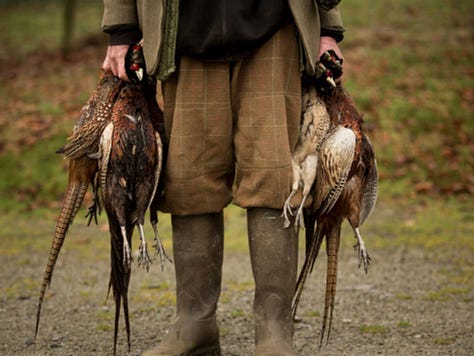
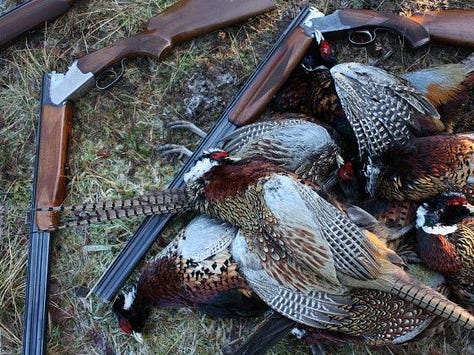
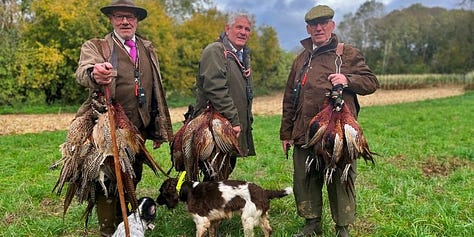

But until then, at the very least one might hope that future-thinking politicians would tighten laws and limit numbers. Say, example given, no more imports and a cap at 10’000’000 released birds? That still sounds insane to me - but even that out-of-this-world high number would be so, so much less than what is happening these days.
We should want to do better. We should want to work on becoming our better selves. There are plenty of people like that - but they are rare in politics for all the obvious reasons. Still, all it takes is courage and commitment to stand up for the right thing. Those who have it, will fight to change the rules and bring about 21st-century laws that make sense. Those who have it are leaders, deserving of our trust, the rest are just your run-of-the-mill politicians.
May the new government have that courage and commitment to stand tall (against the onslaught of the usual lobbies) for future generations. and for the very nature we all depend upon.
That’s it from me for today.
Cheers,
If you enjoy the Rewilder Weekly …
… please consider supporting my work. Your paid subscription will help generate the funds needed to realize a unique rewilding book I’m working on. And, of course, that paid subscription also ensures that the Rewilder Weekly will always keep going for those who cannot afford to pay. A thousand thanks!


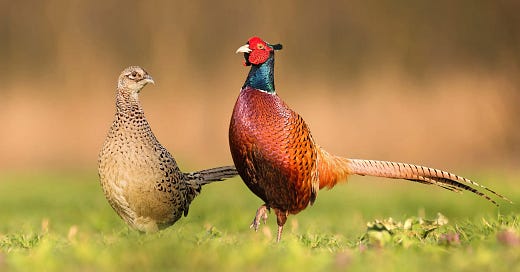




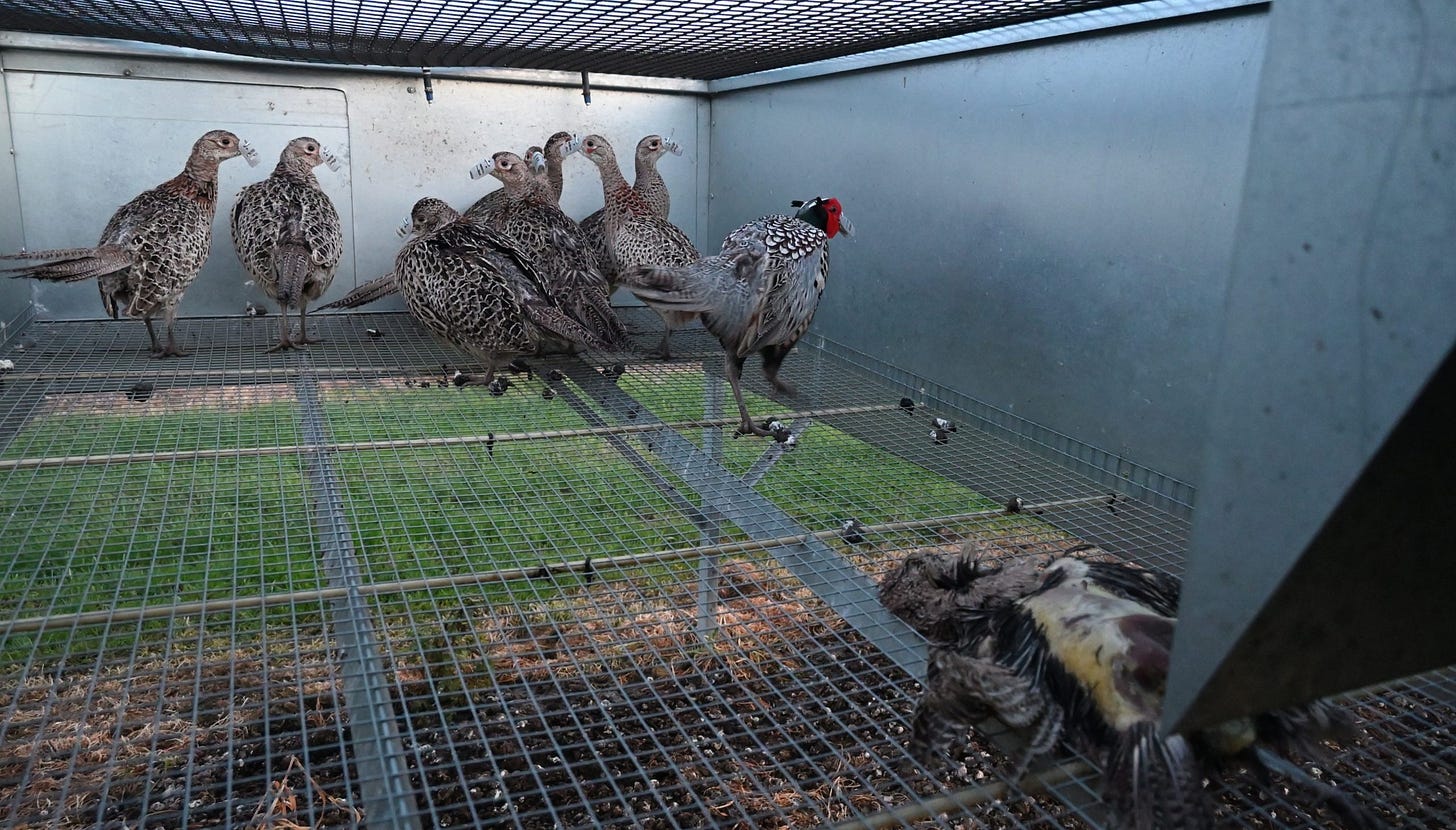


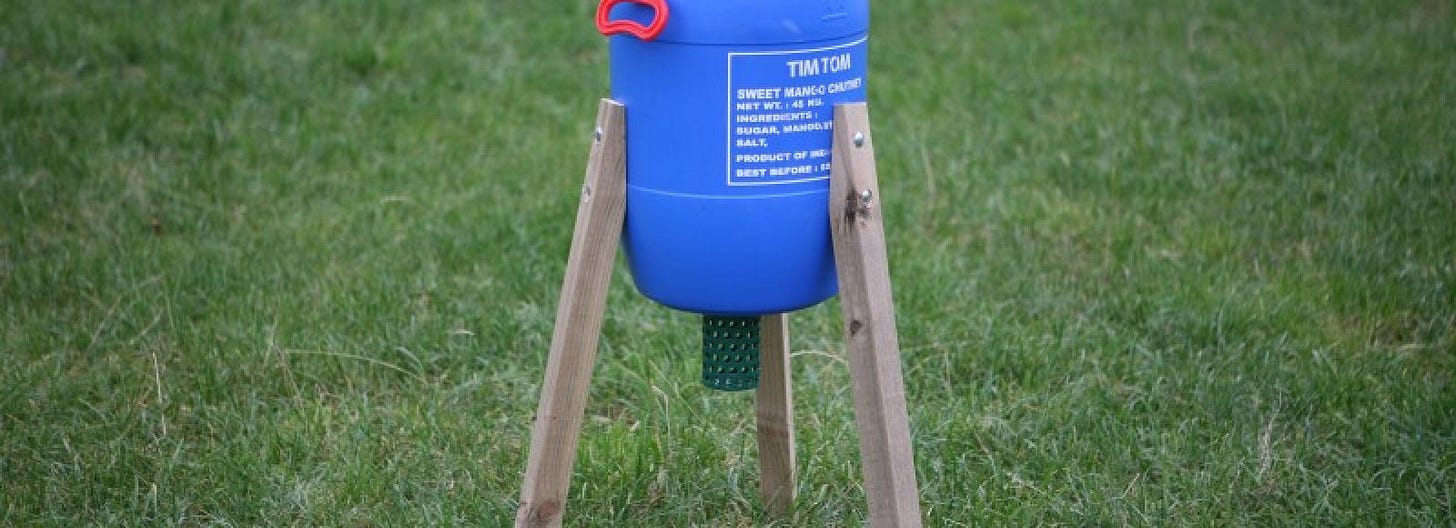




Makes me wonder why these shooting fanatics (if they must shoot something) couldn't instead focus on something native but not endangered like wood pigeon or mallard, or non-native and harmful like grey squirrel or mink.